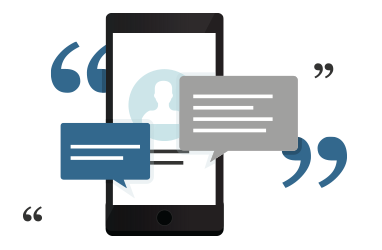Get in touch
Please contact us to discuss how working with Myriad can maximise and secure R&D funding opportunities for your business.
Contact usDiscover how software companies in Ireland can optimize R&D tax credits to support innovation, with guidance on eligible projects, claim strategies, and compliance.
R&D tax credits are one of Ireland’s generous and widely used tax incentives, supporting innovation in Ireland and boosting the economy.
Recent statistics show that Manufacturing is the sector claiming the largest amount from Revenue (€750m) and Information & Communication trailing with €135m claimed in 2022. However, the Information & Communication sector still has a larger number of claimants (more than a third of all claimants!).
So, are software companies not claiming enough of their projects?
For software development to count as research and development (R&D), it has to involve scientific or technical breakthroughs and aim to solve a scientific or technological problem. Qualifying projects need to break new ground in areas like software architecture, algorithms, or technical methods.
To qualify as R&D, work must be systematic (organised and structured) and aim to make real advances. Agile approaches will still be systematic, even though they don’t follow a strict, linear development path.
Companies seeking R&D tax credits need to pinpoint which specific development projects qualify, as well as which phases of the software development lifecycle meet the qualifying criteria. The boundaries of R&D begin and end with technological uncertainty; once the uncertainty is identified, R&D begins, and it ends with the resolution of the uncertainty.
In large projects with formal project management, it’s usually straightforward to track qualifying R&D expenses by phase. Smaller projects may have less formal tracking, so it’s important to clearly document any activity claimed as R&D.
For agile projects, qualifying and non-qualifying activities may happen together, making it harder to separate them. Project managers in these cases should carefully estimate and allocate costs to reflect the effort spent on each type of activity.
For software projects to qualify, the work should address a genuine technological or scientific problem that isn’t already solved by current tools or methods. Examples of qualifying work might include:
Simply using existing tools, methods, or standard processes doesn’t usually qualify as R&D because it doesn't push the boundaries of what's known or tackle any real technological challenges. Routine analysis, copying, or minor updates to existing products aren’t considered R&D either.
Certain activities within eligible R&D projects won’t qualify as R&D, like:
We’ve written up some example projects below to show the kinds of advances and uncertainties which might qualify. Of course, projects can
This example project centres around Company A’s need to recognise millions of data points input by hand by many people and process them into usable datasets for analysis.
Company A set out to create a data validation and orchestration framework to handle large volumes of interconnected data with different outputs. Their goal was to improve data analysis tools to make them 90% less dependent on manual input from operators.
Company A wasn’t sure if it was even possible to automatically apply data logic across millions of datasets. No existing tools could handle automatic business logic for these unique data scenarios.
This example project centres around understanding data flows from external systems, which contain metadata. Company B builds metadata models for these systems. The metadata received from these systems is unintelligible and needs to be analysed and put into some kind of order to understand the data flow through these systems.
Company B wanted to upgrade its connector system to extract only the essential data needed for successful visualisations. They wanted to build an end-to-end visualisation tool for multiple databases by developing a multi-database connector. This connector could target a single instance while pulling in cross-database relationships across the whole system, giving users a clear, detailed view of data connections. This approach offers much more flexibility and detail than current solutions, helping users fully understand and make the most of their data environment.
For SQL parsing, handling multiple databases introduced size issues. Pulling all metadata from various databases and storing it in memory wasn’t possible due to the sheer volume, with some systems having thousands of schemas and tables.
Additionally, some third-party products do not expose much connectivity information, which means that Company B would not know whether it is technologically feasible to integrate with them.
Company B could not determine if a connection was possible as the formats are unknown and undocumented.
An R&D tax credit claim is made using the company’s Corporate Tax Return (CT1). However, companies should prepare their claim carefully, as they may need to defend it in an R&D Aspect Query. This includes identifying eligible projects, only claiming for eligible expenditure and, ideally, writing up a full report that shows how your claim meets the eligibility criteria.
At Myriad, we take the stress out of R&D tax claims. We help you work out which projects are eligible and write up the report for you. We’ll also sort through your costs and make sure you don’t miss anything.
If you want to check your software project’s eligibility, get in touch with the experts.
Discover how software companies in Ireland can optimize R&D tax credits to support innovation, with guidance on eligible projects, claim strategies, and compliance.
Learn how to pass the Accounting Test for R&D Tax Credits in Ireland. Learn requirements, documentation, and get expert help to maximise your claim.
Learn how to pass the Science Test for R&D Tax Credits in Ireland and get expert tips on meeting Revenue's criteria and ensuring your R&D claim is robust.

Please contact us to discuss how working with Myriad can maximise and secure R&D funding opportunities for your business.
Contact us